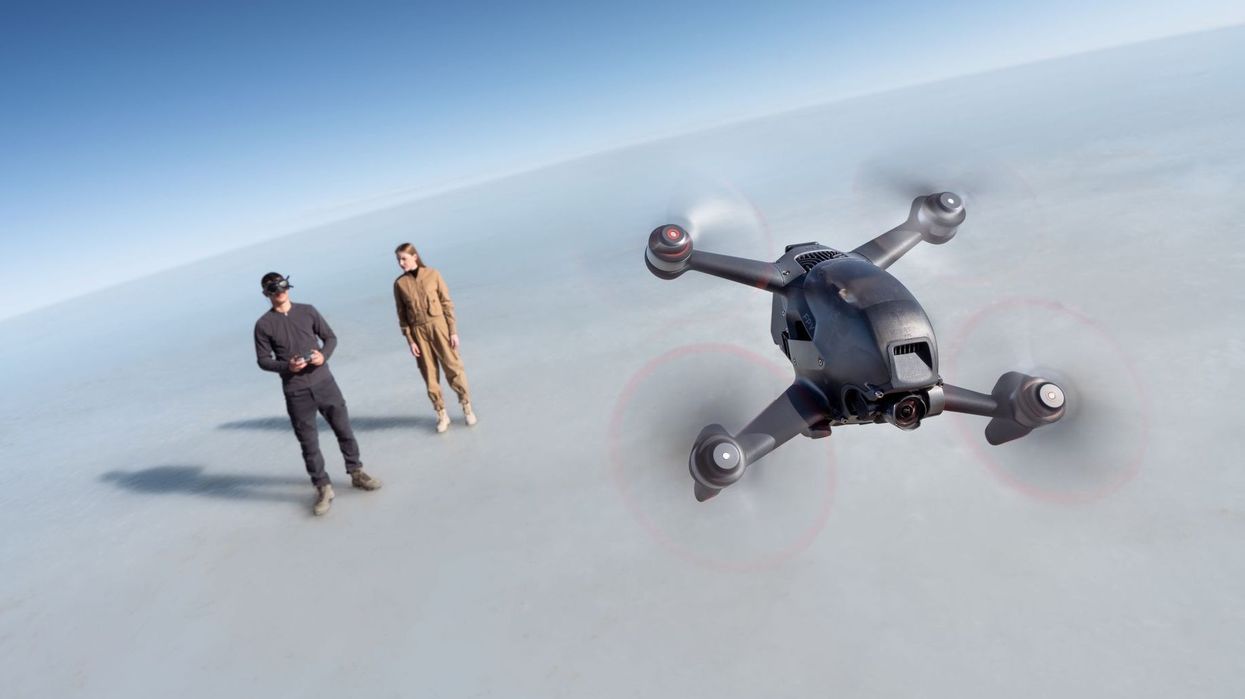DJI FPV Drone: Should Filmmakers Take Notice?
Dominant drone player DJI has launched a new first-person view drone. Is it something filmmakers should have on their radar?

Between the Mavic, Inspire, and the Matrice lineup, DJI has a big hand in motion picture drones. Thus it behooves filmmakers to pay attention to what the company is doing, and what technology it is releasing, to stay abreast of their options for motion picture capture in the sky.
The latest release from DJI is a brand-new drone called the DJI FPV, for "first-person view," which means strapping on goggles and seeing the image from the drone in a fully immersive experience. This unit, while not directly aimed at filmmakers, has some intriguing features that we should be aware of regardless.
The first thing to know is that first-person view is traditionally associated with drone racing. If you want to operate a drone incredibly fast around obstacles, the best way to do that is with goggles, though it does come with one caveat. You tend to be looking straight ahead.
For filmmaking, you often get shots where the camera shoots straight ahead, but the drone moves side to side or even backward. This setup won't work with goggles, since you won't be able to see where the drone is going, and it's a recipe for running into a tree or a building. But if you watch the launch video, you see a lot of shots of the drone flying backward, and you see some pretty clearly cinematic shots intended to look straight out of a car commercial. What gives?

This is definitely not a pure racing drone. What DJI is focusing on is the intuitive nature of FPV flying with cinematic-looking footage in a device that's designed to open that up to a larger array of drone users.
This is a mass-market device that might lead some to get into racing, but it's also meant to be fun for the masses. To that end, they have packed in a whole host of safety features, including some limited object avoidance tools. Serious racers probably wouldn't want to waste the extra weight these features bring, but consumers are generally happy with the tradeoff.
Even with those safety features, flying backward or side to side with an FPV drone is definitely best done in a wide-open space and with a spotter watching the drone. On top of those safety features, there's a 4K 60p camera capable of doing 4x slow-motion at 1080p capable of getting some really dramatic looking shots in internal H.265 recording.

There is another key feature to consider for filmmakers, and that's top speed.
The Mavic 2 is similar in price point and has a top speed of approximately 44 mph (72 kph). The FPV has a top speed of 86mph (140 kph), or nearly twice what the Mavic 2 offers. If you are working on a car spot, and want to approach a moving car from behind, pass it and look back at it, that's going to be much more dramatic on the FPV than what you can do on a Mavic 2.
But will we see similar fast speeds when the Mavic 3 is released? Most likely.

Honestly, the combination of a very intuitive operating interface combined with high-resolution imagery might make this compelling for some filmmakers, and especially for those working in action sports, this might be a real contender. If a big part of your business is shooting snowboarders, skiers, mountain bikers, and rock climbers, there are some real arguments that the FPV experience could help you choreograph some really dynamic shots that hold up.
What do you think of the DJI FPV? Let us know below.











